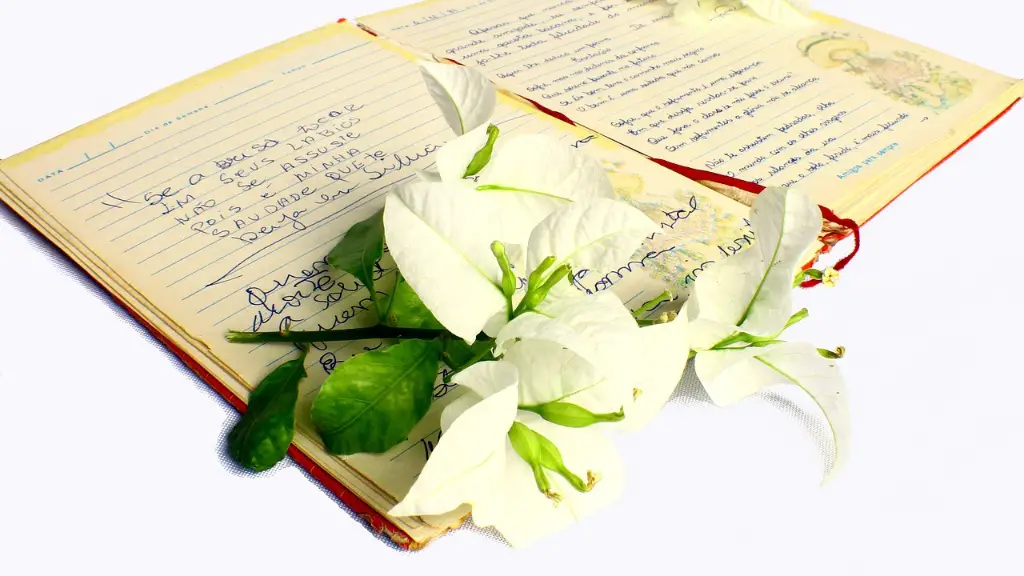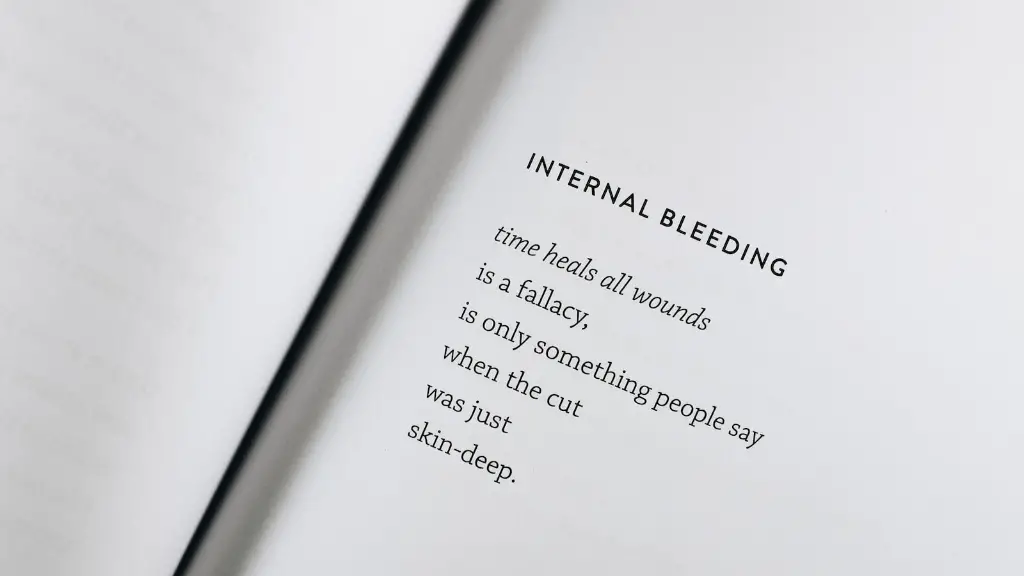A poets mood speaks highly of their creativity, with thoughtful lyricism being the defining factor. In essence, mood is the atmosphere that is created using descriptive words and the manipulation of language. To understand the lasting and potential power of the emotions that moods can evoke, one must grapple with the complexities of the theme.
At its core, a poet’s mood is a combination of their feelings, attitudes, and expressions put together in one published work. This can be done through descriptive words, juxtaposition, linguistic phrasing, symbolism, and even punctuation to make feeling tangible for its reader. Every piece of poetic writing that is delivered to an audience contains a mood that conveys an emotion.
Adding to the dynamics of what makes a poem’s mood come alive, many poets of the past 2000 years have begun to use rhythm, rhyme, and meter to make a connection to their readers. While not all poems use these techniques, they can be used with great effectiveness to create more intense moods. Rhyme and meter can be used to draw readers in and transport them to the poet’s emotional state.
The emotional impact that poets can have with their words is no different than the emotions we experience in everyday life. While some readers may not respond to certain writing in the same manner, the tones and emotions that a poet conveys in their writing can still reach its readers. When a poet is able to pull this off, the reader will be able to visualize the depictions of their moods. The feeling that people get from reading poems comes from the writers- explicit or implicit imagery, similes, metaphors, and more that are included in the work.
When it comes to mood in a poem, the timing of the words is paramount. This provides the reader with a sense of the genre, sentiment and sentiment behind the poem. Metaphors and other poetic devices have the capacity to propel a reader into a different world where the poem’s emotion becomes the forefront of the reader’s experience.
It is said that one of the best attributes of a poet is their capacity to use language to its fullest extent- to evoke feelings, paint mental visuals of their work, and leave an impression on its readers. Combined, these components create the perfect mood in poetry. Mood in poetry is the fuel that drives a poem’s message, pushing it forward and providing its readers with an emotional depth that is unparalleled.
Rhyme
Rhyme can be used to add further control over a poem’s mood. Rhyme adds a musical component to the poem that adds to the imagery as well as the emotive elements. It adds a further dynamic, not only through its repetition but also in the mental images and sounds that can be created by the words. This not only adds to the mood but also provides the reader with an additional layer of context.
The use of rhyme adds a certain flow to the poem, giving it a more orderly feel which can be calming and soothing. When used effectively, rhyme can be used to create a greater sense of familiarity with the reader, making the reading experience more personal and endearing for the individual.
Rhythm is also an important part of how a poem’s mood is experienced by its readers. By setting a certain beat, the poem can be made to feel more alive and engaging. Time and punctuation, however, can also be used to create a more melancholy experience, with words and verses that linger longer than the rhythm would suggest, often slowing down the pace of the poem and building to a more depressing resolution.
It is important to note that the use of rhyme and rhythm needs to be considered alongside the other components of a poem to ensure that the mood is correct. While an intricate rhyme and rhythm pattern may theoretically sound great, if the words and phrases being used do not match the mood, then the poem is not likely to succeed.
Symbolism
The use of symbolism is another tool that can be used to effectively convey a certain mood in poetry. When used correctly, symbolism can enhance the meaning of a work and provide nuance as to a poem’s message. Symbolism can be effectively used to portray a certain mood in a poem, either through its visual imagery or through its associations with certain cultures or beliefs.
Symbolism can be used to illustrate a certain event in the poem or to represent a certain emotion. It can also be used to bring about the feeling of nostalgia or longing for a lost past. These uses of symbolism can bring an entirely new dimension to the poem and can be particularly effective in changing the reader’s mood when reading the work.
The imagery associated with symbols can also serve as an excellent vehicle for conveying a more complex emotion. By carefully selecting symbols within a particular poem, the poet can convey a range of different emotions, thus allowing the reader to identify with the poem more easily.
Symbolism can also be used to provide an atmosphere of mystery and suspense. By leaving out certain details and replacing them with symbolism, the poet can create a more haunting atmosphere and evoke a range of different emotions. The use of symbolism can be particularly effective in allowing the reader to make certain interpretations of the poem, often enhancing its overall ambience.
Metaphors
Metaphors are a great tool to use when attempting to create a desired mood in a poem. By using metaphors to illustrate a point, its readers can be taken on a journey that exceeds the boundaries of the poem and can instead catapult their minds into a new realm of possibilities.
Metaphors are often used to help simplify complex feelings and emotions, making the poem easier to digest. Through metaphors, the author can bring a scene to life, leading their reader in and out of different areas of the poem as well as allowing them to identify more readily with the characters being introduced.
Metaphors can also be used to evoke humour or sadness in a poem. Either way, the reader will be taken on a journey of emotions that transcends the literal meaning of the poem and allow them to identify with something greater.
Metaphors are a powerful tool in conveying a poem’s mood, but must be used with caution as overuse can make the mood of a poem lost or even completely change its intended meaning.
Imagery
Imagery is an excellent way to help create an atmosphere around a poem. By carefully selecting words, pictures and descriptions, an author can create an image in the mind of the reader that is both vivid and meaningful.
Imagery can be further enhanced through the use of personification and similes. By personifying an object or character in the poem, the reader will be able to imagine these in their mind. Similes can be used to further create an image in the mind of the reader, by comparing two distant things with positive or negative connotations.
The use of imagery can also be used to create a certain mood in a poem. By adding a personal touch to the environment, the poem can become more real to the reader and add another layer of emotion to it. This personal touch can be used to create empathy for characters or to give the poem an emotive punch.
The visual elements that imagery brings to a poem can single handedly enhance the mood of a poem. By using such imagery to bring aspects of the poem to life, the reader can be taken on a journey that goes beyond the literal meaning of the poem and allows them to connect more deeply with the work.
Mood and Tone
The mood and tone of a poem go hand in hand and can either complement or contrast one another. A poem’s mood is generally the emotion/sentiment that the reader feels while reading the poem. The tone of a poem, on the other hand, is more of the attitude and context that the poem presents to the reader.
By combining the two, poets can achieve a higher level of emotion that is unique to each reader’s experience. Through the use of imagery, symbols, metaphors, and other elements, the poem can be crafted in a way that makes it extraordinary and powerful.
The mood and tone of a poem can be used to create an atmosphere of suspense or sadness. By using descriptive language and imagery, the poet can evoke a certain feeling in the readers mind. The combination of mood and tone can be used to great effect to create a personal connection between the poet and the reader.
The use of symbolism can also be used to great effect in creating the right atmosphere in a poem. By combining the right words and symbols, the poet can evoke a certain feeling within the reader. This feeling can be used to add more depth to the poem and provide an atmosphere that is unique to each reader’s experience.
Contrasting Moods
The use of contrasting moods can also be used to great effect in a poem. By contrasting positive and negative emotions, the poet can not only evoke different feelings in their reader but also create a feeling of tension and suspense. This contrasting can become even more powerful when combined with effective imagery and symbols.
The combination of contrasting moods can be used to explore a range of themes. By highlighting both the positive and negative aspects of a situation, the poet can create a more complex and powerful poem. This can then be used to great effect in creating a deeper and more meaningful experience for their reader.
Contrasting moods can also be used to evoke a specific emotion in the reader. By combining two conflicting feelings, the poet can enhance the complexity and intensity of the poem and add an additional layer of emotion to it. This can be used to evoke a wide range of emotions, from the sadness and despair of loss to the joy and triumph of overcoming adversity.
The use of mood in a poem has the capacity to influence its readers in a variety of different ways. Not only can it create an emotional atmosphere, but it can also provide insight into the writer’s thoughts and feelings. Therefore, it is essential that poets take time to craft and create the right mood in their work in order to make it more powerful and engaging.





